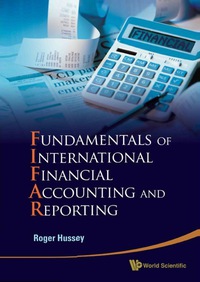t Answer each independent question, (a) through (e)below. a. Project A costs $7,500 and will generate annual after-tax net cash inflows of $3,100 for 5 years. What is the payback period for this investment under the assumption that the cash inflows occur evenly throughout the year? (Round your answer to 2 decimal places.) b. Project B costs $7,500 and will generate after-tax cash inflows of $1,000 in year 1, $1.900 in year 2. $3,300 in year 3. $2,900 in year 4, and $3,300 in year 5. What is the payback period (in years) for this investment assuming that the cash inflows occur evenly throughout the year? (Round your answer to 2 decimal places.) c. Project C costs $7,500 and will generate net cash inflows of $3,500 before taxes for 5 years. The firm uses straight-line depreciation with no salvage value and is subject to a 30% tax rate. What is the payback period under the assumption that all cash inflows occur evenly throughout the year? (Round your answer to 2 decimal places.) d. Project D costs $7,500 and will generate sales of $4,800 each year for 5 years. The cash expenditures will be $1,900 per year. The firm uses straight-line depreciation with an estimated salvage value of $450 and has a tax rate of 30% (1) What is the accounting (book) rate of return based on the original investment? (Round your answer to 2 decimal places.) (2) What is the book rate of return based on the average book value? (Round your answer to 2 decimal places.) Use the built-in NPV function in Excel to calculate the amounts for projects a through d. (Round your answers to the nearest whole dollar amount.) e1. What is the NPV of project A? Assume that the firm requires a minimum after-tax return of 7% on investment. e2. What is the NPV of project B? Assume that the firm requires a minimum after-tax return of 7% on investment. e3. What is the NPV of project C? Assume that the firm requires a minimum after-tax return of 7% on investment e4. What is the NPV of project D? Assume that the firm requires a minimum after-tax return of 7% on investment. 3 ences a 2.42 years b Payback period Payback period Pavhark and years waars w BE 3 of 4 eek 7: Homework Help Save & Exit Submit You skipped this question in the previous attempt Check my work 3 ts OOK c. Project C costs $7.500 and will generate net cash inflows of $3.500 before taxes for 5 years. The firm uses straight-line depreciation with no salvage value and is subject to a 30% tax rate. What is the payback period under the assumption that all cash inflows occur evenly throughout the year? (Round your answer to 2 decimal places.) d. Project D costs $7.500 and will generate sales of $4.800 each year for 5 years. The cash expenditures will be $1.900 per year. The firm uses straight-line depreciation with an estimated salvage value of $450 and has a tax rate of 30% (1) What is the accounting (book) rate of return based on the original investment? (Round your answer to 2 decimal places.) (2) What is the book rate of return based on the average book value? (Round your answer to 2 decimal places.) Use the built-in NPV function in Excel to calculate the amounts for projects a through d. (Round your answers to the nearest whole dollar amount.) e1 What is the NPV of project A? Assume that the firm requires a minimum after-tax return of 7% on investment e2. What is the NPV of project B? Assume that the firm requires a minimum after-tax return of 7% on investment e3. What is the NPV of project C? Assume that the firm requires a minimum after-tax return of 7% on investment e4. What is the NPV of project D? Assume that the firm requires a minimum after-tax return of 7% on investment Ask Bring reces a 242 years b. d1 02 1. Payback period Payback period Payback period Book rate of return Book rate of return NPV of Project A NPV of Project B NPV of Project NPV of Project years years % % e2 e3








